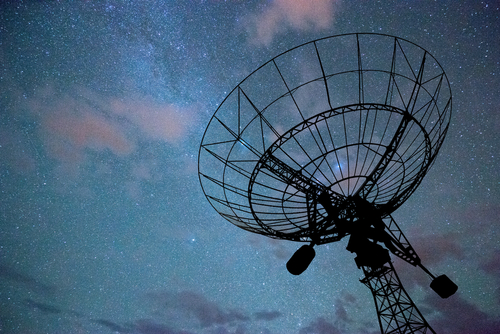To deal with signals that have high density pulses with narrow pulse widths and large amplitude variations it is often necessary to utilize Logarithmic Amplifiers. Logarithmic (Log) Amplifiers (Amps) compress a large input dynamic range into smaller more usable dynamic ranges through the use of a logarithmic transfer function. There are three types of logarithmic amplifiers: The Detector Log Video Amplifier (DLVA), the Successive Detection Log Video Amplifiers (SDLVA) and the True Log Amplifier (TLA).
What is a Detector Log Video Amplifier?
DLVA’s are employed to convert RF signals with a relatively large dynamic range to RF signals in a smaller dynamic range. These video signals are suitable for presentation on active displays or within the dynamic range of Digital-to-Analog converting circuits. DLVA’s can convert 70dB or greater RF dynamic range signals into, as an example, 30dB, maximum video dynamic range. The precise logarithmic transfer function of a DLVA provides relatively easy interpretation of RF signal strengths from these video signal amplitudes.
WHERE ARE DLVA’S USED?
The DLVAs are most commonly found in applications in which the input RF signal is directly converted into a video signal without the need of down conversion. The result of this direct conversion is a very wide capability which improves the probability of interception of present RF signals. Thus, the use of a detector log video amplifiers in detection applications such as phased array radar receivers, passive direction-finding receivers (radar warning receivers) and channelized receivers, secure airbase perimeter protection to detect unauthorized aircraft intrusion. Other applications include utilization in laboratory test equipment, specialized test equipment and channelized receivers.
What is an SDLVA?
The Successive Detection Log Video Amplifiers (SDLVA) use circuitry that does not require detection before the logging process. Similar to the DLVA, the SDLVA preserve the amplitude information. They both use multiple compressive stages of RF gain to emulate the exponential transfer function. The output of each stage is coupled into a linear detector. The typical dynamic range of each amplifier/detector stage is approximately 10 dB; therefore, many such stages are required to cover a large dynamic range. The outputs of each detector stage are then summed in a single video amplifier so as to provide a single detected output. SDLVAs can produce a limited RF/IF output from a separate port. This output is an amplified and limited replica of the input signal.
Successive detection log video amplifiers can also provide very fast pulse rise and settling times because the signal gain and compression takes place in RF circuitry.
SDLVAs are often used in radar missile homing systems, radar altimeters and to drive phase detectors or frequency discriminators. It is an analog device that measures RF power at a frequency range from below 1 GHz to tens of GHz. It exhibits faster rise and fall times at a flat frequency when compared with other RF detectors.
The ICs containing SDLVA are provided either in compact SMT ceramic packages or bare die.
What are SDLVA applications?
The design of an SDLVA is suited for applications in Broadband Test and Measurement, Direction Finding Receivers, Electronic Intelligence (ELINT), Electronic Warfare (EW), Instantaneous Frequency Measurement (IFM) Receivers, and Radar.
Combined together, these devices can produce another device with a different purpose. By using both DLVAs and SDLVAs a broadband log video amplifier can be created.
What is a broadband log video amplifier?
It is a series of log video amplifiers made up of SDLVA and DLVA that offer broadband with a performance of multi-octave frequency from 0.5 GHz to 18 GHz.
Because of the combination of SDLVA and DLVA, it can process a dynamic range of up to 75 dB with a Fast recovery time that ranges from 40 to 150 nsec.
The broadband log video amplifiers on the market feature a 50-ohm hybrid circuit enclosed in rugged metal packages. Combined with SMA connectors, it is designed to be highly reliable and to satisfy MIL-STD-202F environmental conditions. This guarantees an operating performance that ranges from -40°C to +90°C.
What is the application of a broadband log video amplifier?
- It is used to measure signals that are of high frequency and those that widely vary.
- It is used when rapid and precise tracking across the entire frequency band is required.
- In radar and EW systems, the amplifiers are used for finding direction and monitoring power.
- It is used to test equipment in laboratories and in telecommunications and data communication systems.
Where frequencies are involved, you are likely to find a DLVA or SDLVA somewhere in a device.
AKON Inc, San Jose has developed a new DLVA that operates from 18 to 40 GHz frequency range. This new DLVA has 65 dB dynamic logging range with a log accuracy of +/- 2 dB over 80% of the band. AKON’s DLVA has a fast rise time of 10 nS and a 40 nS fall time. AKON products are designed to withstand the demanding environments of Military, Space and Industrial applications. For further information on Akon products visit their web site.
Peninsula Technical Sales is an expert on DLVA/s, SDLVAs, and integrated systems and components. Please call us for any questions you might have at 650-965-3636 and visit us on our web page.
Peninsula Technical Sales represents electronic equipment manufacturers and is proud to offer our services online and to the following cities and their surrounding areas: San Francisco, Santa Clara, San Jose, Fremont, Sacramento, Milpitas, and Santa Rosa.

